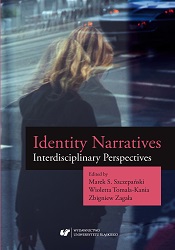



Keywords: Innovation process; new products development; factor analysis; manufacturing industry; innovation models
Purpose: The aim of this study is to identify the major groups of factors that influence the management process of new product development (NPD) for the purpose of its improvement in industrial enterprises. The main tasks are related to the development and approbation of a basic factor model, representing the dependent groups of variables with a significant influence on the process of developing new products in the manufacturing industry - a strategic sector in Bulgarian industry. Research/practical implications: The results of this research are applicable to medium and large industrial enterprises in order to improve the methodology of management process in all its stages of product innovation development. Design/methodology/approach: Empirical data are collected based on a survey, conducted through interview of respondents from medium and large industrial enterprises. Out of 559 organizations, operating in the Manufacturing sector until 2017 (according to data from the National Statistical Institute of Bulgaria), 234 enterprices have taken part in the servey, which makes for 63% activity level of the sample. Furthermore, in the final stage representatives of the surveyed organizations took part in approving the model through expert assessments. The data obtained have been processed by applying descriptive statistics, correlation and regression analysis to look for dependencies between the variables which have been studied. Findings: As a result of the analysis it has been established that the success of the NPD management process is influenced by main factors, such as implementation of target strategy for new product activities and formalising of the NPD process. Other such factors are resource, investment, and technology support provided by senior managers; using mixed working teams of different functional areas; and implementation of specific marketing, research, technological and management tools. Research/practical implications: This article presents the results from a study, related to identifying key factors influencing the management of the product innovation process. Based on the analysis and approval of the model, it can be concluded that solving the difficult tasks of differentiating, systematizing and ranking factors essential for the product innovation process provides valuable and specific grounds for assisting the successful management process of NPD. The results of the analysis could help industrial organizations not only in the manufacturing, but also in other sectors to improve the NPD management process. Originality/value: The aim of the article is to provide methods and adapted good practices, which would help industrial enterprises to improve the process of managing NPD by revealing the factors leading to the success of product innovations. The approval of the model justifies the need of a systematic approach and cross-functional participation of multifunctional teams throughout the life cycle of the innovations under consideration.
More...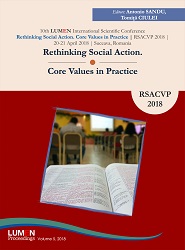
Keywords: psychoanalysis; Spinoza; thinking independence; emotions; ambivalence;
Spinoza wrote the most fascinating politico-philosophical texts during his life, because these were intertwined with his life, with the events he attended and actively involved in, hoping for a reformation of the world in which he lived. Theologico-Political Treatise and On the Improvement of the Understanding reveal us that Spinoza does not belong to eternity, but to his time. He was a thinker who wrote first of all for its contemporaries, for the people of the 17th century.In this paper I will analyze in the psychoanalytic key these two texts and the context in which they were elaborated because we can better understand the philosopher's reaction to the events of his time.Firstly, I will point out that these two treaties wrote by the Dutch philosopher captured the spirit attempt to maintain its thinking independence on emotional tensions that threatened to throw the soul of man in the whirl of regrettable events and actions. Secondly, I will show that Spinoza, a man of his time, was directly involved in the complicated process that aimed solutions for a spiritual unification of the old continent in the second half of the 17th century. He was able to experience a vast array of emotional states ranging from ambivalence to fear and despair and from resignation to enthusiasm in front of scientific and political realities which were on the way to be acomplish in the favorable conditions of the new Europe that emerged after Peace of Westphalia.
More...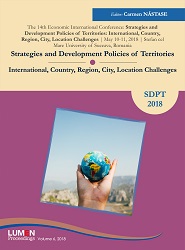
Keywords: Cultural landscape; built patrimony; construction tradition; southern part of Bukovina;
The cultural landscape of the southern part of historic province Bukovina (situated in North-East of Romania) is a resource for a sustainable development of tourism in the area, being considered that the tourist product and service supply combine Bucovina's main assets: nature and culture [1].Named the "Land of Beech", well known for its vast forests, Bukovina was the region where the woodworking craftsmanship has taken shape since ancient times.Here we can talk about a real development of the wood culture (wood was used to build the house, the barn, the stables, the gate and the fence, to make the furniture inside the dwelling, for example the dowry chest, the table, the bed, the dish shelf, the kneading-trough, the barrels, the spoons, the loom, the spinning wheel, the spindle, the towing torch). This wood culture was influenced by historical and geographic factors, it had particularities from one area to another regarding the working techniques, especially due to the influence of the German, Polish and Slovak colonists, who came to Bukovina after its annexation by the Austrians (1774).Recently, the preservation of cultural landscape, as a solution that contributes to a sustainable development of the region, was brought again to the attention of specialists. To have access to all written resources, could be a challenge, if we take into consideration that most of them were produced between 1960-1990, in a limited number, with a limited circulation. The present paper will result of the documentation work of the authors, that have centralized all bibliographic resources that are relevant for the material patrimony of Bukovina.
More...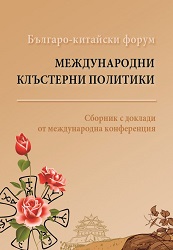
Keywords: social responsibility; digitization; non-standard employment.
The integration of material production processes with digital technologies creates opportunities for increased labor productivity and higher profits but at the same time it generates new non-standard forms of employment that break the conventional form of the „workplace“. Therefore, the purpose of this study is to demonstrate the increased need for socially responsible behavior of the employers to the employees under the changed conditions. The risks that digitization can cause for the employees in relation to different forms of non-standard employment, working conditions, working time, unclear employment status, and social security are being explored. Various social engagement options of the business are proposed to balance the drive for higher competitiveness and improved working environment. In this respect, the public sector can also support various measures to further ease the process of adaptation to new types and forms of work.
More...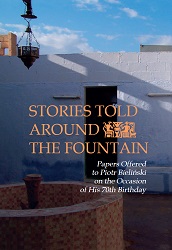
Keywords: Legio I Italica; Novae; connections with eastern part of Empire; inscriptions; finds
Polish archaeological research in the Roman fortress of Novae on theLower Danube have contributed to the body of knowledge on the tiesbetween the Legio I Italica, which was headquartered there, and theeastern parts of the Empire. In some sense, the legion’s establishmentby the emperor Nero to fight in the East already left a mark on itshistory. In the wake of the civil war that followed the emperor’s death,the legion was based in Novae, but detachments continued to operatein the East until late antiquity. Such ties must have left an indeliblemark on the religious beliefs and material culture of the soldiers.Archaeological and epigraphic investigations give insight into thecomplexity of these relations and influences.
More...
Keywords: world heritage; Erbil citadel; Ottoman period; mud-brick construction; conservation assessment; design
The Citadel in Erbil is the most important monument in IraqiKurdistan and a key archaeological site in ancient Mesopotamia inview of the preservation of a unique architectural and urban legacy,as well as the assumed archaeological heritage. The site covers anarea of 10.2 hectares and features uninterrupted settlement fromat least the 5th millennium BC. In 2006, the Kurdistan RegionalGovernment launched a revitalization program aimed at attractingvisitors from all over Iraq. In 2012, architectural and buildingconservationdocumentation was prepared for a historic house,Building 22/3. Located in the southern part of the city, it is one ofits oldest monuments (mid-19th century AD) with late Ottomanportals in the eastern façade attesting to its rich past. Remains of anursi room, with richly decorated bay windows of the shanasheel type,have been preserved on the first floor.
More...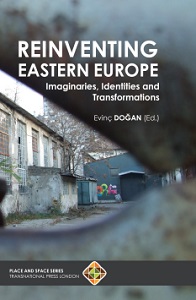
Keywords: Post-Soviet countries; public space; design; domestication;
In 2008, a group of young artists led by Stefan Rusu and Vladimir Us and supported by the Oberliht Association and the European Cultural Foundation pioneered an original intervention for the rehabilitation of a dilapidated esplanade located in front of the Council’s Department of Culture in Chişinău, the capital of Moldova. The efforts started with the idea of building a new urban identity for a civic area that was formerly dominated by representations of power or advertising, to restore the sense of a real public space that could be different from the one imposed by the central government. The group, then, studied a permanent installation meant to represent both a catalyst for the artistic events of the city and a trigger for active processes of social engagement, using the only typology of participated public space that could be symbolically recognisable by the citizens, namely the domestic one.
More...
Keywords: Slovenia; Velenje; Post-socialist city; public space; identity;
This text discusses the revaluation of the public space of the so-called post-socialist city by the example of the town of Velenje. Velenje is located in the northeast of Slovenia and has 33.000 inhabitants. Once a small market place, belonging to the vast Habsburg Empire, Velenje became a major industrial hub after the Second World War and a regional economic centre of the newly founded Socialist Federal Republic of Yugoslavia. At the same time a new Velenje emerged. Today, after Slovenia's independence a quarter of a century ago, the town stands out as an example of modernist town planning of the socialist period in East and Southeast Europe. Velenje is currently promoted both as an important business location and as a tourist destination emphasising its heritage as a modernist model city. The transition from socialism to market economy has been accompanied by a revaluation of Velenje's modernist architecture and design of public space. This is evident in processes of aestheticisation and reorganisation. On the one hand, the built environment is now associated with a different system of meaning. On the other hand, parts of the public space of Velenje have been reorganised. The effective redesign and reprogramming of a vast pedestrian zone in the centre of the town serve the production of a different form of publicness in contradiction to the notions of the socialist period.
More...
Keywords: Yugoslavia; Post-socialist society; urban transformation; Belgrade; Skopje; Zagreb; Ljubljana; Fužine; architecture;
Yugoslavia was established in 1918-at that time known as the Kingdom of Serbs, Croats and Slovenes. In 1946 (post-WW II), when a communist government was established, Yugoslavia changed its name to the Federal People’s Republic of Yugoslavia. Only two years after that, in 1948, conflict between Tito and Stalin resulted in the exclusion of Yugoslavia from the Communist Information Bureau. Given this situation Yugoslavia developed a new agenda of positioning itself “between capitalist West and communist East.” Consequently, cultural and architectural production needed to manifest new ideas.
More...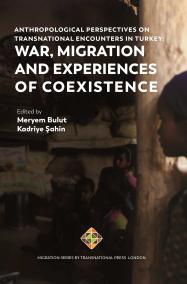
Keywords: Turkey; migration; Antakya; war migrants; anxiety; fear; empathy; Syrian migrants; perceptions; judgements; health;
The twentieth and twenty-first centuries are rightly called as ‘age of migrations’ (See Castles, Haas & Miller, 2014). Contemporary times witness the movements of people at a pace and scope never seen before. Though migration is nothing new: If we consider that the history of the dispersal of homo sapiens from Africa dates back around 150 thousand years, we can safely claim that human beings have been moving since their first appearance on earth.
More...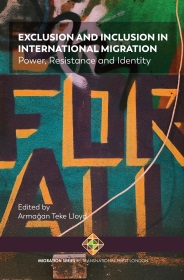
Keywords: migration; refugees; RefConnect; social network; Greece; new media;
The number of people fleeing war, violence and persecution has been higher these days World War II (UNHCR, Global Trends Forced Displacement in 2015, 2016). The global population of forcibly displaced people increased to 68.5 million as a result of persecution, conflict, violence, or human rights violations. More than 25.4 million refugees, over half of them are children, had to seek shelter in nearby countries (UNHCR, Globla trends.Forced displacement in 2017, 2018). Certain Member States on the EU’s external borders, such as Greece, Italy, Malta and Hungary, are overburdened by asylum-seekers which leads to both poor living conditions for them (unjustified detentions, mistreatment, etc.) as well as lower rates of asylum applications being approved. This forces a mosaic of people from different cultures, ethnic and religious backgrounds to spend months or even years away from their compatriots. At the same time, the difficulty of passing from the outskirt countries of EU to the more economically prosperous ones on the north has separated families and friends with little to no communication at all. (European Parliament, n.d.).
More...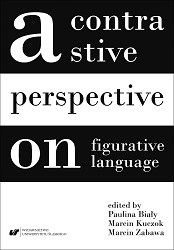
Keywords: cognitive semantics; spatial prepositions;conceptual metaphor;
The recent cognitive research into spatial prepositions have shed light on the rich semantic structures spatial prepositions usually encode. Prepositional semantics is typically conceived of as a conceptual category with a prototype at the center and extended senses at various distances away from it. The extended senses may encode spatial scenes other than the one encoded by the prototype, or they may be metaphorical in nature. In fact, it is not an exaggeration to say that most, if not all, spatial prepositions have metaphorical meaning components in their semantic networks. The proposed study investigates the figurative senses of the spatial preposition at encoding the concept of coincidence. It aims to demonstrate that the cognitive mechanisms of conceptual metaphor account for its figurative sense extensions. The question of Polish equivalence is also taken into consideration. The senses of the Polish spatial prepositions w, na, przy, and o are discussed to determine to what extent they are motivated by the same metaphorical processes.
More...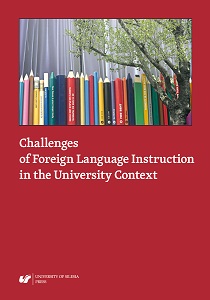
Keywords: creativity; multilingual mental lexicon; metaphor; simile;conceptualisation.;
This article aims to demonstrate to university lecturers as well as to students how “thinking outside the box” by means of metaphoric conceptualisations of studied issues in content courses can raise awareness about these issues. Two pedagogical dimensions are especially in focus here. First of all, one is the promotion of a more active involvement of students in content courses and a better understanding of content issues through a more creative approach to them. The second dimension of this creative approach can impact syllabus construction and the methodology used by lecturers. This article makes use of real life activities employed during lectures on multilingualism, focusing on complex issues of understanding multilingualism and individual multilinguality and the concept of the multilingual mental lexicon (MML). The teaching strategy used here consisted of introducing multilingualism and MML by means of individual student conceptualisations presented in a form of metaphoric representations (in this case, similes).
More...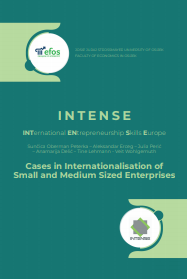
Keywords: case study; SMEs; internationalization; Croatia; Euro-trans GmbH;
Logistics and transport connect our increasingly globalized world. In The Netherlands, it is common to make purchases online, where an “order before” 12.00/15.00/19.00/even as late as 23.00 for next-day-delivery service is soon becoming the norm. Our clothes, our food, our technology, our furniture, our building materials, yes, basically everything that you can think of, traveled hundreds, if not thousands of kilometres at different stages of completion before reaching us as a finished good, to be consumed. Some travel by sea, some by air, and some by land, divided between the railways and roads. Road transport, a market growing for the fifth consecutive year in the EU, is up almost 35% in tonnes of goods per kilometre between 2013 and 2017 (Eurostat, 2018). Not only did the number of goods transported go up during these years, but also the number of kilometres driven has increased. Truck drivers are therefore in increasingly high demand, and need to cope with the ever-growing demand from consumers and businesses to transport goods across the continent, as well as across countries, as fast as possible and as cheaply as possible. Because not only do we, the consumers, want things delivered to our doorsteps at the speed of light, but we are not really willing to pay extra for it (McKinsey, 2016). This is driving prices across the sector down as part of the competition for clients; whilst expenses are increasing with the rising fuel prices and growing environmental concern (Rapier, 2018).
More...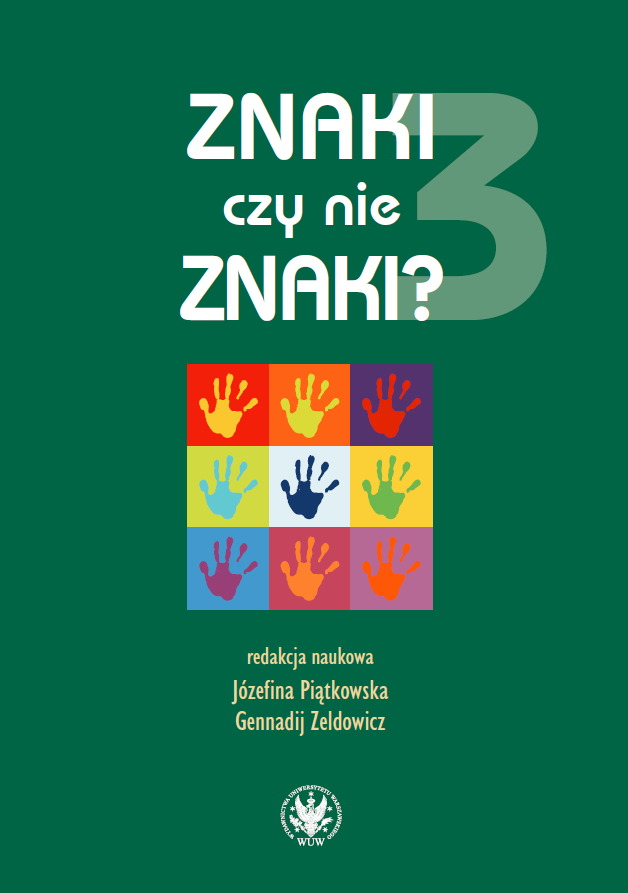
Keywords: theory of relevance; inference; interpretation; poetry; Philip Larkin
Recently, relevance theory has been increasingly used in literary studies. However, little research has examined the role of inferences in the interpretation of a poem. This article illustrates how pragmatics and, more precisely, relevance theory, may provide a scientific, cognitive ground to understand how poetic interpretation is constructed through the reader’s inferences. To do so, I analyse “Mr Bleaney”, by British poet Philip Larkin (1922-1985), as a case study for applying relevance theory concepts to literary interpretation. Specifically, I analyse inferences that may be drawn from the poem’s linguistically encoded word meanings, and how such inferences are influenced by the poem’s sonorous qualities, like rhythm and meter. The resulting reading emphasises the poet’s identification with a stranger, Mr Bleaney, who by the end of the poem emerges as an alter ego upon whom the poet projects his own existential fears. Because relevance theory is not prescriptive, it may also be useful in explaining dissenting readings, as shown by briefly comparing the resulting “pessimistic” interpretation of the poem with an “optimistic” one offered by Wayne Booth (2014). Thus, I suggest that inferential analysis may improve dialogue among critics dealing with the same literary work. Overall, I argue that inferential analysis based on relevance theory may help explain interpretations in poetry and thus become a firm first step towards a better understanding of other aspects of aesthetic and poetic effects.
More...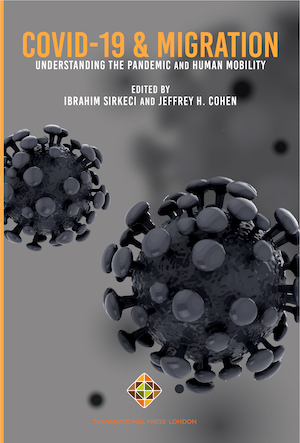
Keywords: collective insecurity; covid-19; migration;Malaysia;
No one escapes insecurity today. It is one of the most basic human experiences, more pronounced in others depending on their personal and social circumstances. Personal insecurities refer to the subjective feeling of anxiety and to the concrete lack of protection. This paper attempts to interrogate collective insecurity particularly among migrant workers. The paper likewise argues that such experience gives rise to a form of collective resistance which has become more pronounced within the context of the coronavirus pandemic. In this paper, we argue that migrant insecurity is a collective experience, and is all the more heightened in the context of the coronavirus pandemic. (see for example, Cohen, 2020). We further argue that forms of resistance have been developed as a response to collective insecurity.
More...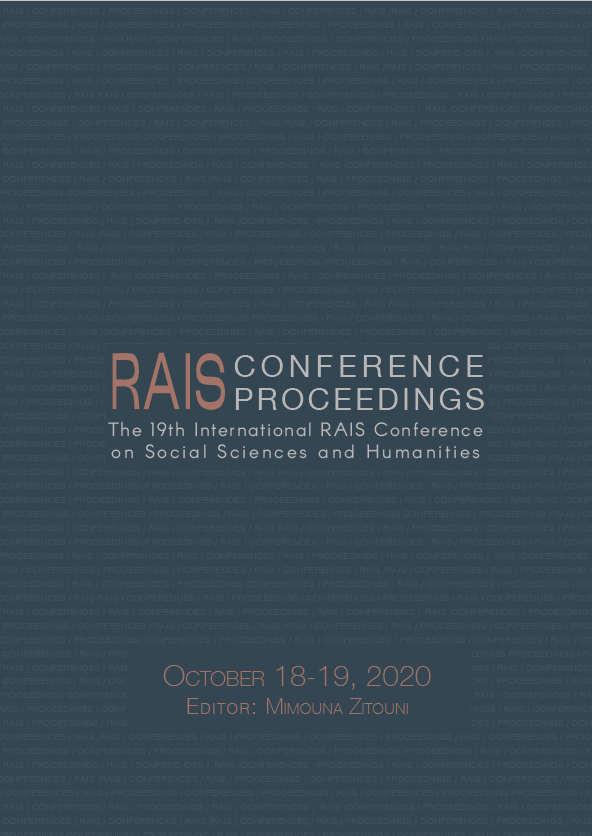
Keywords: Consumer Studies; cultural inclusivity; curriculum expectations;
Home Economics, Consumer Studies and other similar subjects can contribute valuable learning to the lives of learners. Efforts to globalize the contents of these subjects have, however, occasionally led to a loss of cultural inclusivity in curricula, as has been the case in South Africa. Notwithstanding the South African educational landscape needing to cater for diverse cultures, the Consumer Studies curriculum still mainly focuses on Western knowledge and skills, particularly the selection of products that learners must make in food production lessons. This leaves especially African learners feeling disconnected and unmotivated to perform well or succeed in the subject. The overarching aim of the research was to frame recommendations in the form of practical suggestions as part of efforts to surmount this disconnect in order to broaden the perceived and experienced value of food production in Consumer Studies for a wider range of culturally diverse South African learners. A qualitative case study was employed to explore if and how a Consumer Studies teacher at a school consisting of mostly African learners was attempting to overcome the disconnect between the curriculum expectations and learners’ prior experiences. Interviews and site visits were conducted to collect data, and the data were then thematically analyzed from an interpretivist perspective. The findings indicate a substantial disconnect between the expectations of the teacher (informed by curriculum requirements) and the prior experiences and learning expectations of her learners, especially as regards the qualities of successful food products. Two recommendations are made: first, the teacher should use demonstrations as a teaching method to improve learners’ familiarity with products; and second, clear visual images should be displayed to learners to aid them in understanding the expected outcomes of the products they have to make in practical lessons.
More...
Keywords: migration and remittances; South Asian migrant workers; Cameron Highlands; Malaysia; remittances; migrant workers;
In migration research involving migrant workers, the often “seen” aspect is the determinants of migration, migration processes and patterns, income earned and the remittances made. However, there is another dimension of migration and remittances that often receive less or no attention which is the “unseen” aspect. The “unseen” aspect is related more to the sacrifices made by migrant workers which underlies the determinants of migration, migration processes and pattern, income earned and remittances made. The sacrifices made by the migrant workers often receive less attention in previous studies despite the sacrifices made by them are instrumental to the social and economic well-being of the migrant workers and their families. They are willing to make various sacrifices because their goal is to maximize the remittances made to their home countries. The income earned by migrant workers has two main uses namely for expenditure and savings purposes. The savings made while working abroad are the money which is sent by South Asian migrant workers to their home countries as remittances. This implies that the more the sacrifices are made, the higher will be the amount saved, therefore the higher will be the remittances.
More...